| Designation: | BM-21 9K51 GRAD |
 |
|---|---|---|
| Manufacturer: | Splav State Research & Production Association FSUE | |
| Product type: | Weapons & Weapon Systems | |
| Name: | Multiple rocket launcher |
Few systems in the world’s artillery arsenal can boast such a wide spread as the Grad (Hail) MLRS developed in the USSR in 1963. Created by the Tula association Splav under the supervision of Chief Designer A. Ganichev, the system initially comprised the M-210F HE fragmentation unguided rocket (index number 9M22U), BM-21 launch vehicle and a transport vehicle with 9F37 racks. Unique design approaches used to develop the system allowed for its mass production in line with extremely good effectiveness-cost criterion. A profound technological analysis of the project, including the introduction of several principally new ammunition manufacture technologies, enabled the licensed mass production of system components in virtually any state with machinebuilding industry. Such a possibility was exploited, for example, by Bulgaria, Slovakia and Rumania. The Grad system is in the inventory of armies in at least 50 countries.
It should be mentioned here that several countries appreciated the high qualities of the system and mastered production of their own replicas of 122mm rockets after borrowing the design approaches of the Tula association. Manufacturers demonstrated at a number of international exhibitions such models of "Grad cousins", although they actually looked like twins. For over 30 years the Grad MLRS has remained, in terms of performance, unsurpassed by any 122mm multiple launch rocket system manufactured throughout the world. It would be wrong to believe that the Splav State Research and Production Association fielded this developed system only to abandon its creation and switch to building up weapon power only by increasing the caliber and creating excellent systems, such as the 220mm Uragan and 300mm Smerch. Time is harsh even on the best specimens of designer thought. Technical progress does not mark time and requires permanent work on weapon upgrading; otherwise, even the strongest market positions may be lost.
Aware of this fact, Splav continued to work on 122mm systems. Initially, work was aimed to expand the list of ammunition used to diversify combat employment of the Grad MLRS.
Splav has already created the following items of ammunition:
- rocket to plant antipersonnel mines; a salvo of 20 rockets can reliably mine 1 km of the front at ranges of up to 13.4 km;
- rocket to lay antitank mines ensuring the defeat of armor materiel by a focused charge possessing high armor penetration and affecting the entire bottom surface (90 rockets are required to mine 1 km of the front);
- smoke-generating rocket; a salvo of 10 rockets places a continuous smoke screen, 1,000 m wide and 800 m deep, at ranges of up to 20.2 km;
- rockets to set up radio interference within 1.5 and 120 MHz, using a set of seven rockets with a firing range of 4.5 to 18.3 km;
- rocket to illuminate a 1,000 m diameter circle of terrain with a light intensity of 2 lx for 90 s at an altitude of 400 to 500 m.
The most important direction in modernization of the Grad MLRS is represented by the creation of new rockets. Ballistit solid propellant is, in terms of energy characteristics, inferior to mixed propellant; consequently, the latter’s use in rocket propulsion units allows for an increase in the maximum firing range and payload, thereby enhancing rocket power. It is only natural that the replacement of the propellant requires a complete redesign of the propulsion unit, while the weighting of the warhead provides an opportunity to consider several interesting versions of its filler. Therefore, the designers of the Splav State Research and Production Association, headed by Director General Nikolai Makarovets and Chief Designer Gennady Denezhkin, speak in proposals about the creation of new 122mm rockets for the Grad MLRS.
The first of them concerns a rocket with a maximum firing range of up to 35 km and enhanced power warhead. It uses a mixed propellant motor and prefragmented HE warhead loaded with enhanced power explosive. If the motor is replaced and the old warhead is used, the rocket range increases to 36 km. According to specialists, the effectiveness of target engagement by this rocket will increase on average twofold, compared to the standard rocket.
The second rocket under development has a separable HE fragmentation warhead and a maximum firing range of up to 33 km. It can be fitted with two types of fuzes: electronic or mechanical time fuze and contact fuze. In the first case, the warhead separates by an electronic fuze command, applied before launch either manually or remotely from the launch vehicle cab. Inconsiderable retrofitting of the launch vehicle is required for remote input: the launch tubes should be fitted with contactless input devices, while remote setting equipment should be installed in the cab and interconnected by cables.
In the second case, the time to separate the warhead is introduced into the time fuze via a manual mechanical setter. After operation of any type time fuze, the rocket functions in the same way: the warhead separates, the parachute deploys to decelerate and stabilize the warhead to ensure its approach to the target at an angle close to the vertical. On impact with the target, the contact sensor operates and explodes the warhead.
When firing for blast effect only, no commands are applied to time fuzes, and warheads do not separate from rockets. The effect of HE fragmentation rockets with separable warheads on type targets is on average sixfold higher than standard 9M22U rockets owing to a higher impact angle relative to the horizon.
The third new rocket, which can be created for the Grad MLRS, is a rocket with self-guided submunitions used to engage armor materiel at a maximum firing range of up to 33 km. Such modernizations include the development of a separable warhead loaded with two self-guided submunitions, electronic time unit and mixed solid propellant motor.
The association also can develop and supply at the customer’s request rockets with a firing range of up to 32-35 km fitted with other types of warheads such as a cluster warhead with antitank and antipersonnel mines for terrain mining and radio interference transmitters.
In addition to rocket modernization, work is underway to update the BM-21 launch vehicle, above all, to improve its operational characteristics. In particular, the cluster of metal launch tubes is replaced by two dispensable launching transporting containers (LTC), made of polymer composite materials. They are mounted on the launch vehicle via a special additional adapter frame.
LTCs ensure the transportation and launch of rockets, as well as their storage on vehicles and in arsenals. Launch vehicles are reloaded by replacing containers with aid of load handling facilities. The containers are interfaced via a special electric connector. The retrofit can be carried out directly at the vehicle user site.
After implementing the plans marked by the Splav State Research and Production Association, the Armed Forces of the Russian Federation, as well as all interested customers, will receive a new, much more effective weapon system corresponding to up-to-date designs and technological levels, which will play an important role in artillery armament. Interest has been displayed in this problem as attested by specialists and management of the Splav State Research and Production Association during negotiations in Russia and abroad. This is corroborated by the following example. During the Eurosatory-96 exhibition in June 1996, the State Company Rosvoorouzhenie, Splav and French firm Celerg announced that joint design work to modernize 122mm rockets for the Grad MLRS had been completed. Owing to the use of a new Russian-French motor, a new propellant of the firm Celerg and improvements to the aerodynamic parameters of the Splav-produced rocket, its range has been extended to 36 km and firing accuracy has been improved. The firms announced their readiness to supply modernized rockets to the countries that have Grad MLRS in operational service. No comment, as they say.
|
||||||||
|
|||||||||
Related Articles |
|
NLOS-LS Team Uses Warhead To Defeat Stationary Target (03.12.2009) |
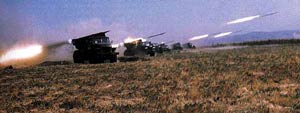 |
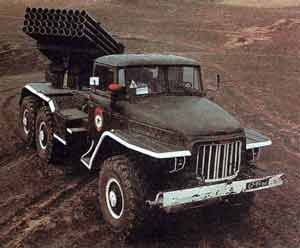 |
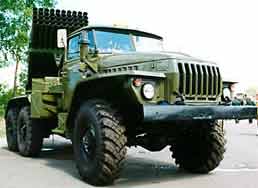 |
 |
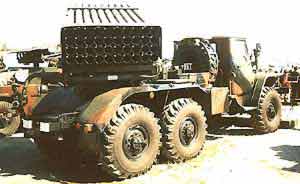 |
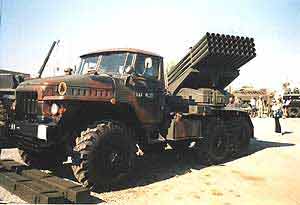 |





























